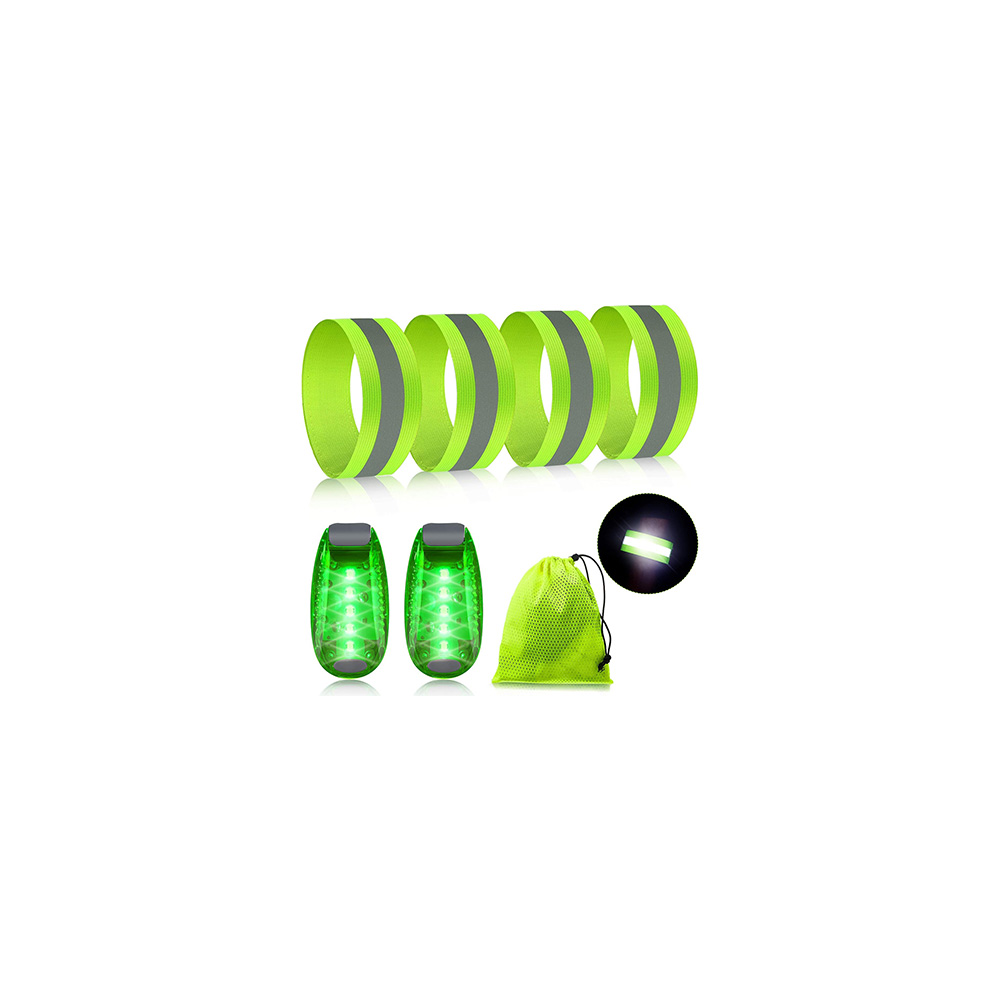
This guide focuses on checking the visibility of reflective gear for runners. It covers various lighting conditions to ensure safety and effectiveness.
Failure in Passing Driving Test Due to Traffic Lights! #DrivingTest #DrivingFailures #DrivingLessons #LearningtoDrive
Understand the Importance of Visibility
- Wear reflective clothing: Invest in clothes with reflective strips or materials. They will make you stand out in low-light.
- Use a headlamp or light source: Carry a headlamp or a small light to illuminate your path and make yourself visible to others.
- Choose bright colors: Opt for running gear in bright neon colors that will enhance your visibility even in darkness.
- Follow a well-lit route: Pick running routes with good lighting to ensure you can see and be seen by others.
- Stay alert and aware: Even with high visibility gear. Be mindful of your surroundings and possible hazards on your running route.
- Run against traffic when on the road: By running facing oncoming traffic, you increase the chances of drivers seeing you.
- Consider carrying identification: In an emergency, having ID on you can help others assist you. It lets them do so fast and well.
Runners need good visibility in low-light conditions. It makes them safe by making them visible to drivers, cyclists, and pedestrians. Running in the early morning or evening is dangerous. Poor visibility increases the risk of accidents and of others not seeing you. By being proactive to improve your visibility. You cut risks of accidents by taking precautions during your run.
Select Different Lighting Conditions
To choose various lighting settings, such as daylight, dusk, night time, and artificial lighting, follow these steps:
- Use different light sources. For daylight, stand in a well-lit area with natural sunlight. For dusk, wait for the sun to start setting to experience low light conditions. At night, simulate darkness. Or, wait until night to see your surroundings. For artificial lighting, use lamps or overhead lights in a controlled setting.
- Observe the changes in visibility. Stand in different spots and note how well you can see details, colours, and textures in each light. Examine shadow visibility and explore the area with effortless navigation.
Testing visibility under different light conditions helps you see how light affects sight. It lets you make informed choices on lighting for different settings or activities.
Wear Reflective Gear
When experimenting with various reflective gear such as vests, bands, and stickers to observe how they reflect light, follow these steps:
- Choose a safe area with low light conditions, ideally at night or during dusk.
- Put on each piece of reflective gear one at a time.
- Stand in front of a light source like a flashlight or car headlights.
- Observe how the light reflects off the gear.
- Note the intensity and visibility of the reflection for each item.
- Move around to see how the reflection changes from different angles.
- Compare the effectiveness of each piece of gear in enhancing visibility.
Try out different reflective gear in varying conditions. You can understand them better. You can see which ones work best in low light.
Observe Visibility Levels
- Stand at different distances and angles from the reflective gear.
- Begin by standing a few feet away directly in front of the gear.
- Assess how well the gear stands out in well-lit conditions.
- Move to the side and see how the reflectiveness changes from an angle.
- Step back further to simulate how the gear stands out from a distance.
- Observe any differences in visibility based on various lighting conditions.
- Take notes on how the reflective gear performs at each distance and angle.
- Experiment with different positions until you have a clear understanding of its visibility levels.
Take Photos for Comparison
Take pictures of yourself wearing the gear in different lighting conditions. Do this so you can compare the visibility levels. Stand in a well-lit area and take a photo with the gear on. Move to a dimly lit space or outside during dusk to capture another image. Ensure the light source is consistent behind the camera. In each photo, stand upright with your arms relaxed to your sides for accurate comparison. Review the pictures side by side on a computer or phone screen. Do this to assess how visible the gear is under different lighting conditions. This will help you determine how noticeable the gear is in different environments.
Adjust Reflective Gear Placement
Move the reflective gear around to find the most visible placements. Try wearing your clothing or gear in different positions. Then, look at your reflection from various angles. Try putting reflective gear on your chest, back, arms, or legs. See which spots are most visible. Test the effectiveness by having someone else shine a light at you while you move around. Pay attention to how the gear reflects light. It reflects back clearly to the source. Keep adjusting until you find the placements. They offer the best visibility in different light. Test each position for visibility and comfort. Use this to find the best spots for your reflective gear.
Reflective Gear Assessment Summary
In conclusion, gear must be visible in various lights. This is key for your safety. Follow the guide. Choose the right gear for different times of day and places. It’s going to greatly increase how well others can see you. Remember, being proactive matters. Choose the right reflective gear. It could make all the difference. It will help you stay safe on the roads.
Essential Supplies
Visibility Enhancements Needed
Choosing the Right Reflective Gear
- Choose reflective gear. It should fit well and allow for free movement during your runs.
- Wear reflective gear in low-light conditions. Some examples are early morning or evening when visibility is reduced.
- You can also add more reflective elements to your clothing or accessories. For instance, you can add reflective arm bands or a reflective vest for better visibility.
- Check your reflective gear often. Make sure it stays effective in reflecting light.
- Remember to wear reflective gear. Combine it with other safety measures. For example, carrying ID, telling someone you’re running route, and following traffic rules. Do this to stay safe while running in low-light.
Stay Visible and Safe
Certainly! Runners need reflective gear to stay safe in low-light conditions. Many options are available. Popular reflective gear includes vests, jackets, shirts, shorts, shoes, armbands, and even hats. Designers use reflective materials to create the items. These materials boost exposure. They make it easier for others to see you while running in the dark. Remember, the key is to make sure that the reflective gear covers enough of your body. This will maximize visibility.
You must regularly check and maintain your reflective gear. This is key to ensuring you can see well, especially in low-light conditions. Reflective gear gets dirty, damaged, or worn out. Then, it may not reflect light well to drivers, cyclists, or pedestrians. This makes you less visible and raises the risk of accidents. By keeping your reflective gear clean and in good shape, you can greatly increase your safety. This applies to travel on foot, by bike, or while jogging at night. Remember, visibility is key to staying safe on the roads or trails!
Yes, runners prefer lightweight options for reflective gear. Many runners choose lightweight reflective gear. They wear vests, belts, or straps. The designers created the gear to give wearers comfort. It also enhances their visibility in low light. These options are lightweight. They use materials like mesh or lightweight polyester. These materials ensure breathability and comfort during runs. Choose gear that is both light and reflective. It’s important for safety while running in low light.
Reflective gear gives 360-degree visibility. It definitely makes you safer, especially at night or in low-light conditions. Reflective gear helps drivers and other road users to see you from all angles. This reduces the risk of accidents. Safety dictates its implementation in most circumstances to prevent accidents. This holds if you’re beside busy roads or in shaded pedestrian zones. Remember, when others see you, your chances increase. It helps you stay safe.
Yes, there are specific requirements for reflective gear to be visible to drivers. Reflective gear should meet specific standards for visibility in low-light conditions. In the United States, reflective gear for night use should meet the ANSI/ISEA 107 standard. This standard outlines requirements for materials, colors, and tape placement. They ensure that the wearer is visible to drivers in various lighting conditions. You must choose reflective gear that meets these standards. It will keep you safe when walking or working in low-light.
Reflective gear illuminates your presence in the dark, enhancing visibility. It makes you easier to see by drivers and other pedestrians. This helps reduce the risk of accidents and improves your safety. Reflective clothing and accessories bounce back light from cars, streetlights, or other sources. This makes you stand out in the dark. This visibility can prevent accidents. It ensures you stay safe during your nighttime runs.
Yes, there are rules for adding reflective gear to running clothes. They ensure you are visible and safe in low-light conditions. The key is to wear reflective clothing or accessories. Pedestrians and drivers should be able to see them standing out. This includes items like reflective vests, jackets, armbands, or footwear. Make sure the reflective gear covers all sides of your body. It’s also recommended to wear bright colors during the day. You should combine them with reflective elements at night. Check your reflective gear regularly for optimal performance. Replace damaged or worn-out items to stay visible on your runs.













 Home
Home  Whishlist
Whishlist  Compare
Compare  Blog
Blog
I tried adjusting the placement of my reflective gear based on your guide, and it made a noticeable difference in visibility. Something as simple as proper placement can really enhance safety during low-light conditions. Thank you for sharing these practical tips!
I'm glad to hear that adjusting the placement of your reflective gear had a positive impact on visibility! It's often the little adjustments that make a big difference in safety. Thank you for sharing your experience, and I hope you continue to stay safe and visible during all your outdoor activities.
Thank you for finding the guide helpful! For advanced testing, you can try using a light meter to measure the reflective gear's visibility under varying light intensities. Additionally, you can experiment with different reflective materials to see which ones perform best in different lighting conditions.
I think the guide overlooks the importance of reflective gear quality in visibility. Not all reflective materials are created equal, and that can significantly impact visibility. What are your thoughts on this?
I appreciate your perspective. You're right that the quality of reflective gear plays a crucial role in visibility. In future updates to the guide, I will include a section discussing the impact of reflective material quality on visibility to provide a more comprehensive understanding.
I found this guide really helpful in understanding how to check reflective gear visibility. Do you have any advanced tips for testing different angles of light or assessing reflectivity over time? I want to ensure I'm fully prepared for all lighting scenarios!